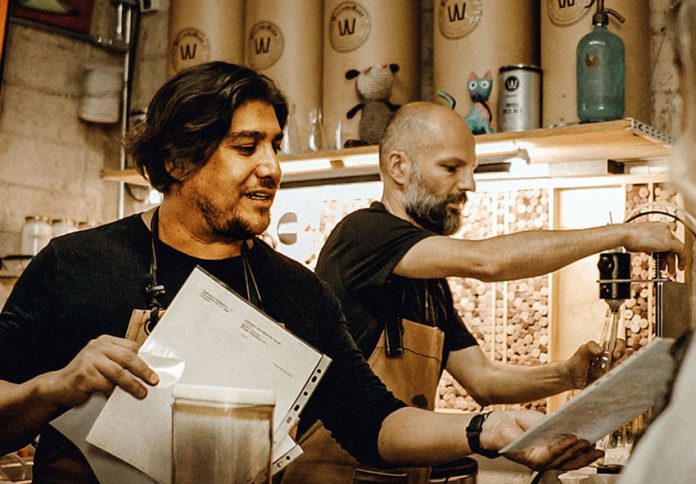I live in a rustic community called Pinar de la Venta, located at the edge of the huge Primavera Forest next to the city of Guadalajara. For years my friends and neighbors have enjoyed a series of events called Jazz in the Woods: good music, good company, good food and drink, all organized by a Frenchman named Michael Boudey.
When I recently came upon an ad for a new enterprise called Beer in the Woods, I immediately suspected Boudey must be behind it and gave him a call.
“Hello, vieille branche,” what is Beer in the Woods?”
“Mon cher ami, If you want to find out what we are, come and visit our bodega in the woods, it’s just down the hill from where you live,” replied Boudey.
Well, I always thought a bodega was a warehouse, but this was something else: a cheery place with a bar and a huge screen showing video clips of local jazz bands.
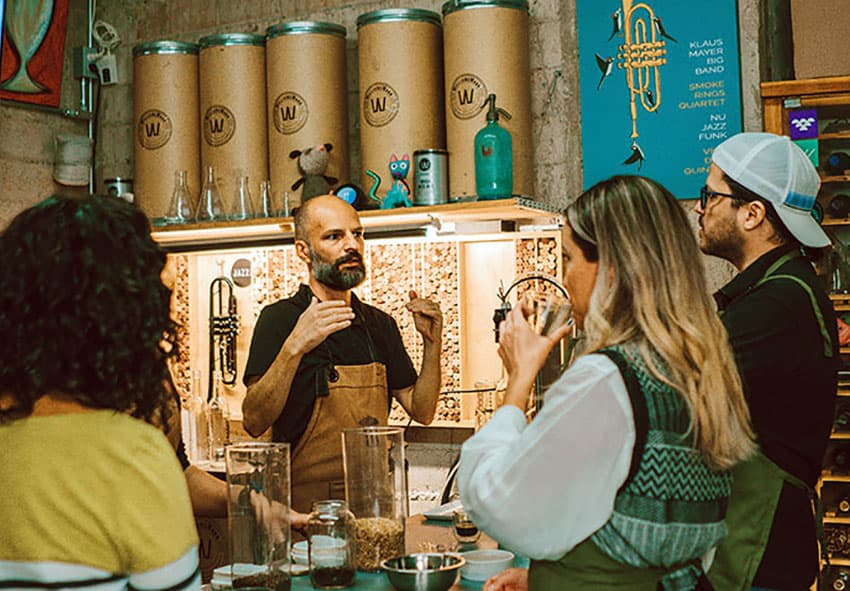
“Welcome to Beer in the Woods,” said Boudey and his partner, Francisco “Paco” Aureliano.
“We make beer here,” they told me, “but we are not a commercial brewery. Every 15 or 20 days we create a new brew and we never repeat ourselves. So we have made 70 different beers since the beginning of this year. Because we are a lab, not a commercial brewery, we never make the same beer twice. A commercial brewer is focused on volume, but we focus on creating a recipe, which means, of course, that we keep very detailed records of every new brew we create.”
So I finally understood that my friends design craft beers for restaurants, bars and hotels, tailored to their menus and to their clients.
“The owner of that restaurant or bar attends one of our workshops,” explained Boudey. “He learns by doing. He literally sweats and pees the beer that he thinks is perfect for his customers, the one that he chooses: his beer. We accompany him in every step of this process. There’s a story behind that beer he chooses: we design it, but he participates every step of the way. That beer tells his story; it expresses his gusto.”
“Just what sort of things do people learn when they attend one of your workshops?” I asked.
“Well, as you know, beer contains four ingredients: water, barley, yeast and hops. So let’s take a little look at its principal ingredient which, to be precise is called malted barley. Let me show you what that looks like.”

Boudey then produced lots of bottles filled with barley grains of a wide range of colors from very pale, through crystal and amber to chocolate and black, encouraging me to taste their contents. I was amazed at how many different flavors my tongue was discovering. Malting, I learned, means immersing barley in water so it sprouts, but then quickly drying the barley to stop the process just after the sprouting begins.
“When barley is allowed to germinate,” said Boudey, “it turns into a super food, just like alfalfa sprouts do. As sprouts they contain all the amino acids, vitamins, minerals, and very important enzymes. In the malting process, all those benefits are preserved. Since barley responds best to malting it’s typically used in all beer making. Wheat beer, for example, contains 50% barley. Different ways of processing and toasting barley result in different flavors which may remind you of caramel or chocolate. It’s not that the beer contains these ingredients, but that it was made with barley that has been malted and toasted in a special way.”
Michael Boudey and Paco Aureliano met 22 years ago at Tec de Monterrey University in Guadalajara where they were first introduced to beer making by a fellow teacher.”We started out making it in a garrafon and had a lot of fun, but never did we suspect we’d end up where we are now.”
Years later they came up with the idea of Jazz in the Woods. “During those sessions,” Boudey told me, “we found that there was nothing more enjoyable than trying out new beers, new wines and new music with our friends. So we got together with some of those friends, bought some really fine quality beer-making equipment and started a sort of club where we could make beer and drink it while listening to great music and sharing everything together.
“This we were doing for five years, during which time Paco took courses, read books and watched hundreds of tutorials on YouTube, spoiling great quantities of beer along the way, but learning all the time. Finally he served an apprenticeship in Guadalajara.”
Here Paco Aureliano chimed in: “At the beginning of 2020, Michael and I decided it was time to move from theory to practice, not just taking notes while watching other people make beer, but actually getting our hands dirty, getting scalded from boiling water, plunging right in, and Michael said, ‘Yes, let’s do it!’”
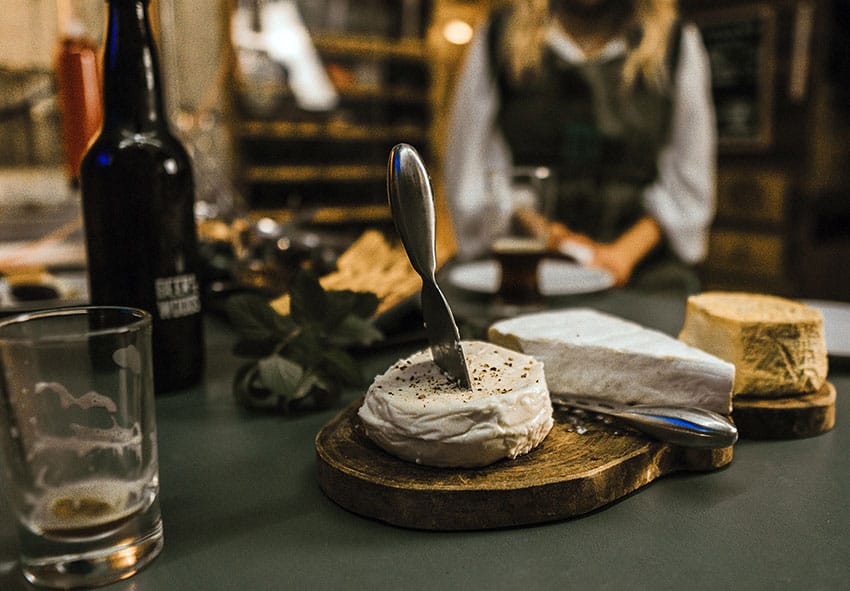
“Next,” Aureliano went on, “we started holding workshops in which people would not just watch beer being made, but would actually make it themselves, a direct experience. So two people might participate and we would make three beers. It was an experience in every stage of the process; it was an exercise of exploring the mysteries of brewing. It was learning, it was tasting, it was discovery and especially: it was fun.”
I wondered, of course, just what these two entrepreneurs were doing with all that beer they were producing.
“That was no problem at all,” they told me. “We started a beer tasting club! Every two weeks we send six big bottles of beer or mead to each member of the club and these are always quite different styles of brew, perhaps India pale ale or wheat beer or stout. This is so the member and his or her friends and neighbors can always learn something new about what they have not experienced before. And it’s all about discovery.
“For example, two days ago a friend said: ‘You gave me a stout last time and I had never tried one before, so we did some experimenting at home. My wife made some brownies and oh, wow, what a great combination it turned out to be!’ So we are always trying to entice people out of whatever ‘taste rut,’ so to speak, that they have fallen into.”
The brew masters told me there are around 30 people in their club right now. The first 20 who ask for the beer-tasting kit receive their bottles on Monday and the following Saturday night participate in a Zoom session for the tasting (cata in Spanish). “We suggest foods that can accompany the beers, for example fruits, cookies, cheeses, meats, chocolates and actually any kind of food people want to experiment with.”
If you would like to join the club or participate in a craft beer workshop, just go to the Beer in the Woods website or visit their Facebook or Instagram pages.
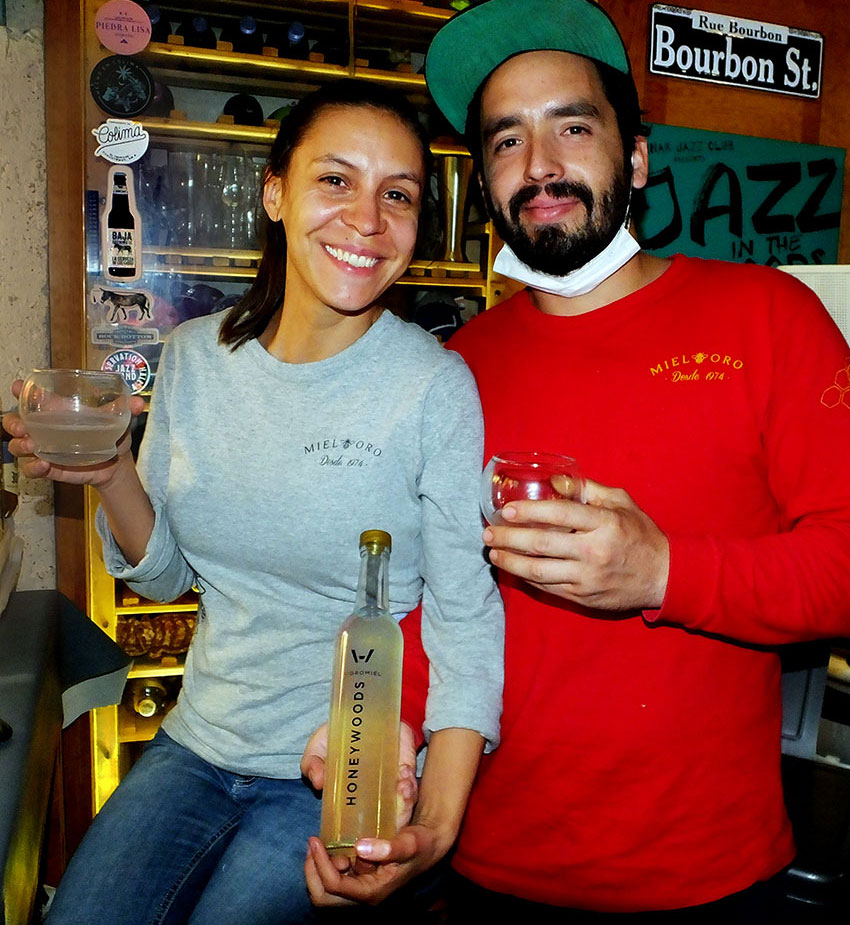
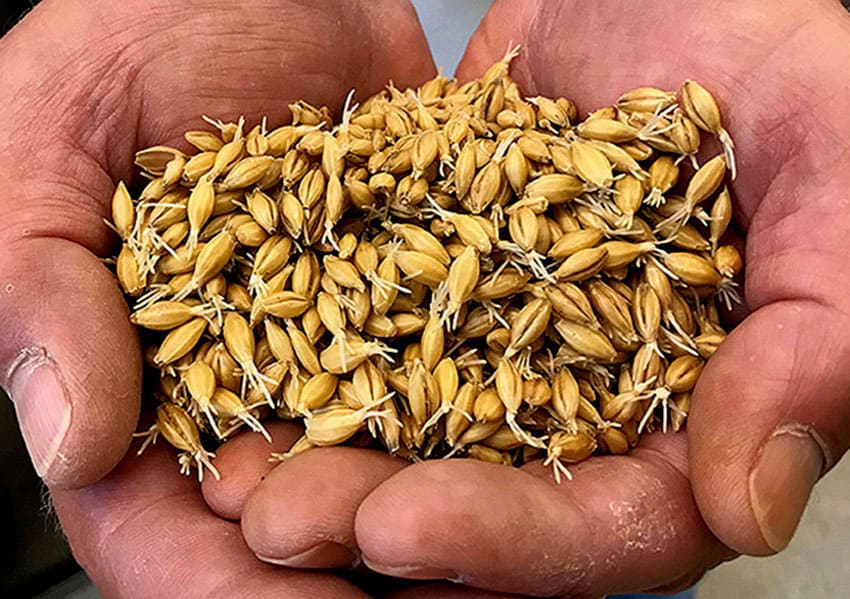
The writer has lived near Guadalajara, Jalisco, for more than 30 years and is the author of A Guide to West Mexico’s Guachimontones and Surrounding Area and co-author of Outdoors in Western Mexico. More of his writing can be found on his website.
